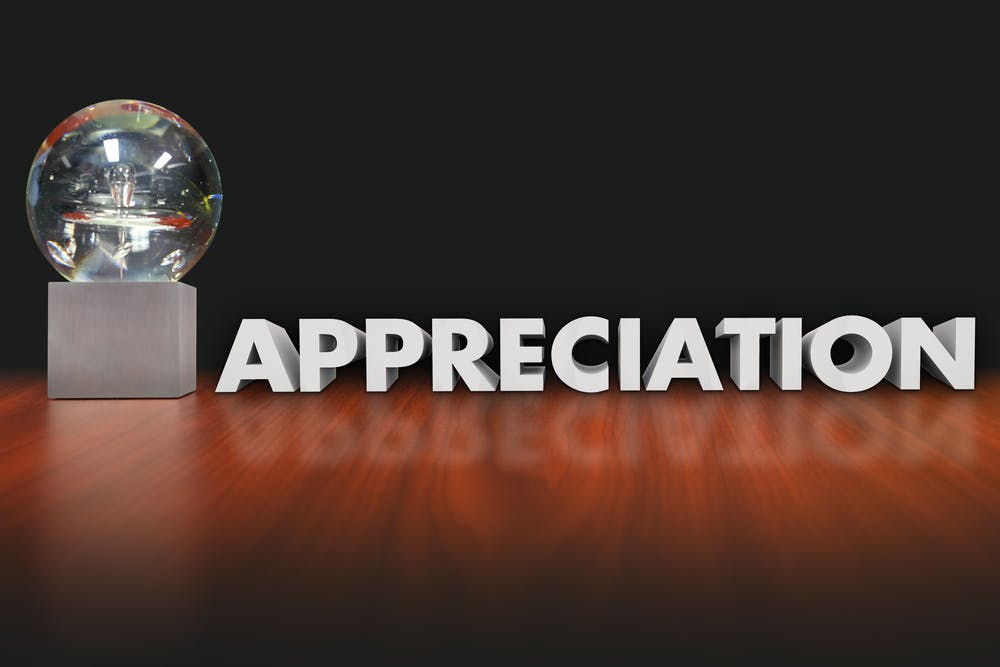As employee recognition programs continue to be a critical element of employee engagement strategies, Michael C. Fina Recognition conducted its second annual in-booth survey of more than 300 HR professionals attending the SHRM 2016 Annual Conference & Exhibition in our nation’s capital in June.
Respondents confirmed the importance of recognition programs, with the majority (51%) implementing at least 3 to 5 recognition initiatives. Other common survey trends included interest in above and beyond performance programs, no- and low-cost solutions, improved data tracking and ROI measurement.
Above and beyond and service award programs most popular
When employees are recognized on a daily basis through meaningful feedback and rewards, they are more engaged with an organization, which in turns boosts performance and productivity. Given that fact, 1 out of 3 survey respondents said that above and beyond performance awards represent the most impactful programs. As team members exceed expectations in the workplace, it is critical to show appreciation for a job well done.
Traditional service awards were cited as the most effective programs for 1 out of 5 respondents. A high-performing service anniversary program can increase employee loyalty, drive employee engagement, and create a culture of positive feedback that improves overall performance. Celebrating milestones and rewarding individual achievements have typically been the most authentic and organic types of employee recognition. In fact, they are essential elements to any program and the backbone for all other recognition.
Importance of daily recognition emerges
As budgets are always a factor, companies are increasingly considering no- and low-cost recognition solutions like eCards or digital notes. An overwhelming majority (94%) of individuals surveyed said they were either very interested, interested, or somewhat interested in a no- or low-cost solution. Surprisingly, respondents reported that their main interest in these types of solutions is not budget-related. Instead, they find them appealing because low-cost solutions encourage daily recognition and interactions between peers (35%), are easy to manage (22%), and help build company culture (18%).
Personal notes and eCards were the third most effective form of recognition, just behind above and beyond performance recognition and service awards. Previously, personal notes and eCards were most often used informally to balance out other formal initiatives. Now, as these programs become more prevalent, HR professionals are more willing to give these easily administered programs credit for keeping employees engaged and providing overall convenience, with a very low initial investment.
A split decision on early recognition
The earlier organizations can start building a meaningful connection with an employee, the better. For decades the 5-year mark was the benchmark to start a service award program, but younger workers thrive on instant feedback and a more social workplace. For two consecutive years, our SHRM survey respondents have been split 50/50 on whether or not they recognize employees during their first year of service.
We expect that early recognition will eventually become a preferred option. Over the past few years, organizations have started to offer a comprehensive combination of formal and informal recognition. Many employers, even if they do not offer formal recognition early on, will provide an introduction to their recognition program to show an additional company benefit.
Roi = room for improvement
Measuring a recognition program’s return on investment is often difficult for companies. SHRM conference respondents said they evaluate recognition programs with employee surveys (39%). Workplace surveys can be an easy, but valuable way to assess a program, but opinions must be balanced with objective data to get a complete read.
Other SHRM respondents (35%) said they do not measure their employee recognition programs. This is surprising since many of today’s recognition solutions offer program reports with relevant employee data points, and technology makes reporting on programs more accessible. Keeping track of employee data points does not have to be intimidating with the variety of tools available today.
The bottom line
HR departments today have a wider array of program options and technology to maintain productive recognition programs. Whether it is early recognition, no- and low-cost solutions, or seamless data tracking and ROI measurement, program flexibility and low-risk program options are in demand. The future always holds surprises but if the voice of these HR professionals is any indication, recognition initiatives, as well as their budgets, will continue to grow as they help drive overall worker engagement and productivity.
